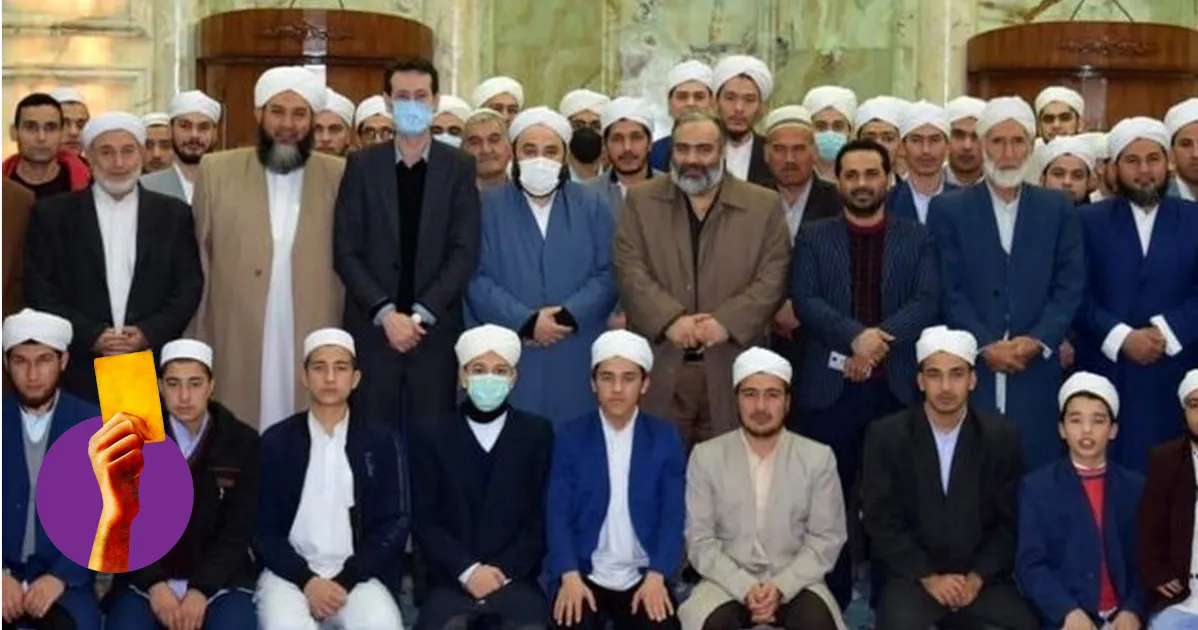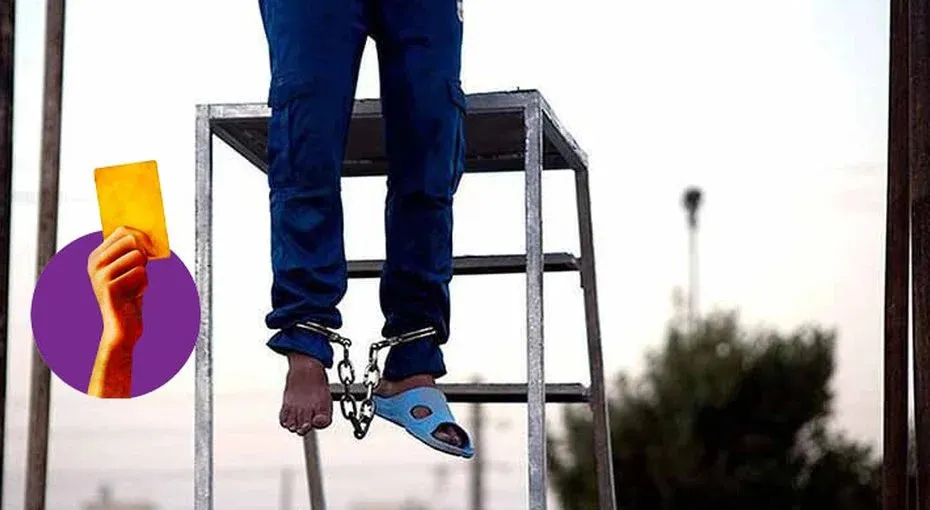
Big Lie by a Member of Parliament: Afghan Migrants Have Equal Conditions with the People of Iran
May 2, 2023
Fact-Checking President Rouhani’s Claim: Has Treatment and Education for Resident Afghans in Iran Been Free?
May 2, 2023Mehdi Farmanian, vice chancellor for research at the Qom-based University of Religions and Denominations, claimed at a conference in Qom that Sunni Muslims enjoy sufficient academic and religious freedoms in Iran. Speaking during a talk on “The Dignity of Religions and Denominations in the Islamic Republic” on February 10, Farmanian said: “Religions and faiths have enough freedom in the Islamic Republic. Today, the Sunnis have 15,000 mosques, 500 religious schools and 100 religious institutes, which they themselves have explicitly admitted.”
Is freedom of religion and worship upheld in the Islamic Republic of Iran? Do the Sunnis of Iran have 15,000 mosques, 500 religious schools and 100 religious institutions at their disposal? And are these figures evidence of religious freedom in Iran? In this report, Iranwire seeks to answer these questions.
***
The Sunni Population of Iran
The Statistical Center of Iran does not publish segregated figures on Iranians’ religious beliefs, even though this question always appears on the census questionnaire. However, it does seem to hold this data. In a 2016 article published on the center’s website, entitled A Look at the State of Iran’s Religion and Population in the Last Half Century, researcher Elham Fathi stated that Muslims have accounted for more than 97 percent of Iran’s population since 1956. Over time, Fathi’s data analysis indicated, the size of religious minority groups has shrunk due to emigration and lower birth rates.
This article, however, declined to distinguish between Shia and Sunni Muslim populations in Iran. In the past officials have estimated that Sunnis make up five to 10 percent of the total Iranian population, while Molavi Abdol Hamid, an Iranian Sunni community leader, believes that based on the community’s own research the true figure stands at about 20 percent. “Sunni citizens mostly live in marginal areas of the country and on the borders,” he said. “But they are also [present] in cities and central regions. In cities like Tehran, the number of Sunnis stands at more than a million.”
Whether Sunni Muslims are more or less numerous than has been estimated, they ought in principle to enjoy the same religious and civic freedoms as all other citizens of Iran. To establish the veracity of Farmanian’s claims, the question must be examined from two angles:
1. Freedom of religion and worship
2. Freedom of political participation
Freedom of Religion and Worship
Iran’s Sunni community is relatively free to practice its religion in the majority of Iran’s 31 provinces. According to Article 12 of the Iranian Constitution, Sunnis are allowed to perform their religious rites and to provide the children of believers with religious education as they see fit. However, this principle is not always applied in practice and the freedoms afforded to Sunnis on the ground are not uniform.
For one thing, the Sunni community has long protested that their freedom of worship is curtailed in Tehran. Despite the apparently sizeable Sunni population in the capital, the International Quran News Agency puts the total number of mosques in Tehran at 3,439, of which the share of Sunni Muslims is zero.
The IRGC-affiliated Fars News Agency has reported that on the contrary, Sunnis own or control nine mosques in Tehran. A recent article states: “With a simple search, we find the addresses of nine [Sunni] mosques in Tehran and around the capita: Sadeghieh Mosque in Second Sadeghieh Square; Delavaran Street; Quds City Mosque, located at km20 of the Old Karaj Road; the Persian Gulf Mosque, located on the Fatah Highway; Nabi Mosque in Danesh City; Haftjoob Mosque in Mallard Road; Vahidiyeh Mosque in Shahriar; Nasimshahr Mosque in Akbarabad; Raziabad Mosque on the Shahriyar highway.
Molavi Abdol Hamid, however, retorts that these are not dedicated mosques. Rather, he has said, they are prayer halls: temporarily informal set-ups without an imam or the standard facilities, usually based in residential homes or commercial premises. They come into existence, he said, because “either some people have temporarily gone out of the house to pray or have rented [a space] for a place to pray.
“A mosque is different to a prayer hall. A mosque is always there, and you can always attend. But a prayer hall is like an office that has a space for prayer. Sunnis may be evicted from the premises after a year or two, or the place may be destroyed altogether.”
The same prayer halls in Tehran, Abdol Hamid has said, are under constant threat of closure. “Legally there would be no constraint to building a mosque for Sunnis in Tehran. But a series of prejudices not only prevents the construction of such a mosque, but incites the closure of the prayer halls in the Iranian capital.”
Sunnis also face obstacles to holding the traditional Eid al-Fitr prayers in Tehran. Every year on the eve of arguably the biggest collective event in the Sunni calendar, the issue of whether or not the Sunnis are allowed to hold prayers in the capital at all is raised in Iranian media. Police have repeatedly blocked Sunnis entering even informal places of worship on the morning of Eid al-Fitr. On July 4, 2019, then-Tehran MP Mahmoud Sadeghi tweeted: “After much deliberation, it was agreed to hold Eid al-Fitr prayers at the Sunni prayer hall in Yaftabad, Tehran. Today, they announced that police even blocked these morning prayers. Any official I call either doesn’t answer, is not available, or says it doesn’t concern him!”
Farmanian has also claimed: “Today the Sunnis have 15,000 mosques, 500 religious schools, and 100 religious institutions”. These figures, or variations on them, have been raised by many other government officials and Shiite scholars in the past, including Mohammad Hassan Zamani, the head of the Social and Political Affairs Office of Iran’s seminaries. Zamani claimed that Sunnis had 17,000 mosques and 12,000 seminary students, adding: “The Islamic system has given assistance to Sunni seminaries, and the number of placements has increased tenfold. The Islamic Revolution paid attention to the issue of social security for Sunni scholars and clerics. When I was at the [state-established] World Forum for Proximity of Islamic Schools of Thought, about 12,000 Sunni seminary students were covered. The number has increased since then.”
However, a look at the budget afforded to Shiite religious institutions compared to their Sunni counterparts indicates the per-capita balance is off. Iran Budget, an initiative of the freedom of expression advocacy group Article 19, observes that in 2017 the government allocated some 2.4 trillion tomans to religious institutions, of which Sunni entities received just 88bn tomans, or 0.3 percent of the total. This year, the government is set to pay 1.5 trillion tomans to religious institutions under the Supreme Leader’s control, and another 1.5 trillion to religious propaganda groups such as the Organization of Islamic Culture and Communication and the Islamic Propaganda Organization, all of which are managed by Shiites and promote Shiism. In Tehran, about 40 billion tomans a year are allocated to Shiite mosques from the municipal budget, while Sunnis in the city receive no funding for places of worship.
Furthermore, the macro-management of Sunni institutions is under the control of Shia clerics. In 2008 the Supreme Council of the Cultural Revolution created a body called the “Planning Council of Sunni Religious Schools” to supervise Sunni educational facilities. Both the chair of this council and the majority of its members are Shia representatives of the Supreme Leader and Shiite seminarians. Just three Sunni clerics whose “credentials” are approved in advance by the (Shia-led) Guardian Council are afforded a seat at the table; that is to say, they are already considered regime “insiders”.
Freedom of Political Participation
Do Sunnis have the rights as Shiites in the political arena? Can they compete fairly with Shiites in elections? Do they have the right to engage freely in political activities? The answer in all cases is a resounding no.
Not only Sunnis, but Shia Muslims who do not adhere to the official line of the Islamic Republic, are barred from entering the Iranian political sphere. In the case of Sunnis, the ban on political participation is explicit in Iranian law. Under Article 107 of the Iranian Constitution, no Sunni Muslim can hold the office of Supreme Leader. Articles 115 and 157 bar them from running for president or chief justice. Article 91 stops “non-Muslims” from attaining membership of the Guardian Council, but in practice Sunnis have no hope of entering as the council’s main duty is to check the compliance of new legislation with Twelver Shia jurisprudence.
In addition, Sunnis are practically unable to form a political party or become official members of political parties. Article 1 of Iran’s “Law on the Activities of Parties, Political Associations and Trade Unions and Islamic Associations for Recognized Religious Minorities” states: “A ‘party’, a ‘community’, an ‘association’, a ‘political organization’ and the like is defined as an organization that has a charter and a constitution, and is established by a group of real people who believe in certain political ideals and policies, and whose goals, programs and actions are in accordance with the principles of governance in the country, and in line with the general policies of the Islamic Republic of Iran.”
So far, so reasonable-sounding. But Article 4 of the same law then states: “Religious minorities are only allowed to engage in collective activities on religious, cultural, social and welfare issues specific to the minority to which they belong.” That is, followers of religious minorities have no absolute right to engage in political activity and can organize in other, discrete areas only as far as it concerns their own faith. For this reason, there is no non-Shiite political party in Iran.
In an unwritten manner, Sunnis are excluded from other types of political office as well. In the 43-year history of the Islamic Republic there has been no Sunni government minister, no Sunni member of the Iranian parliament’s Presidium, no Sunni member of the Expediency Council, no Sunni judge, no Sunni member of the Supreme Judicial Council, no Sunni senior manager of Islamic Republic of Iran Broadcasting, and no Sunni proprietor of any domestic state-controlled media outlet. Sunnis have the technical right to stand for election as MPs and local councillors, but in practice, they tend to be disqualified from the running long before the vote.
Conclusion
“Religions and faiths in the Islamic Republic have enough freedom,” claimed Mehdi Farmanian, vice chancellor for research at the University of Religions and Denominations. “Today, the Sunnis have 15,000 mosques, 500 religious schools and 100 religious institutes, which they themselves have explicitly admitted.”
IranWire’s examination of the known facts indicates that the statistics Farmanian cites may be called into question, while his claim that Sunnis enjoy “enough freedom” is far from reality. The Iranian Constitution and subsequent laws bar Sunnis from full participation in Iranian political life, including forming political parties, while in Tehran they have neither a mosque nor the freedom to hold Eid al-Fitr prayers. The budget afforded to Sunni religious institutions is disproportionately small and Sunni educational institutions are overseen by a Shia-dominated “planning council”.
IranWire thus rates the claims by Mehdi Farmanian, vice chancellor for research at the University of Religions and Denominations, about Sunni freedoms in Iran as “not true”.
Not True: a false claim about a specific new event or something that has not previously been proven to be true using existing facts and evidence.




